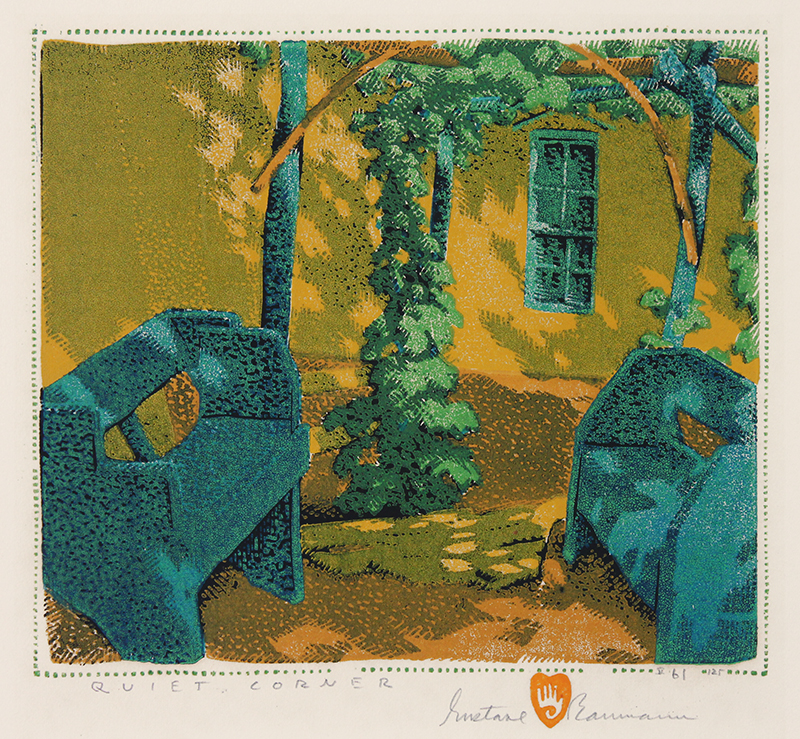Quiet Corner is a color woodcut from 1936 by American master printmaker, Gustave Baumann (1881-1971). This color woodcut is pencil signed, titled and editioned II 61-125. Quiet Corner was printed by the artist on an unidentified ivory wove paper and the image measures 7-1/2 x 8-5/8 inches. The reference for this work is Chamberlain 150: for an explanation of the edition, we refer you to page 397 of In A Modern Rendering The Color Woodcuts of Gustave Baumann: A Catalogue Raisonné.
The locale of Quiet Corner was very difficult to pin down and many thought that it might be the Baumann garden. Baumann revisited this image three times. It was carved in a linear block to be included in his unpublished letterpress block book, Woodcut Impressions of New Mexico. Another, smaller linear block was carved and impressions included in his leterpress pamphlet Gus Baumann Sketch Booklet, and the image was used on his greeting card for 1958. A proof impression inserted in the mock-up for Woodcut Impressions of New Mexico is inscribed in pencil by Baumann: “A German Garden—Velarde N.M.”
Gustave
Baumann was born in Magdeburg,
Germany on 27 June 1881. Ten years later his family immigrated to the US,
settling in Chicago. In 1896, Baumann began working in the commercial art field
while saving money to study in Germany. After returning from Munich in December
1905 where he studied at the Kunstgewerbeschule, Baumann worked again in
commercial art to support his family. In 1909, he discovered Brown County,
Indiana where life was inexpensive and he could stay for three months. He produced
a series of small format color woodcuts featuring the people and places of
Brown County and then produced five large format color woodcuts. His woodcuts
were accepted by the committee for the 1915 Panama Pacific International
Exposition and he won a gold medal in 1916. Baumann headed east to Wyoming, New
York in 1917 and taught at a summer school. From there he headed to
Provincetown and New York City before returning to set up his studio in
Wyoming. The southwest beckoned and he headed west in May 1918, stopping in
Taos for the summer and fall. His funds were low and he needed to head back to
Chicago but first stopped at the new art museum in Santa Fe to see an
exhibition of his woodcuts. The rest, they say, is history.



